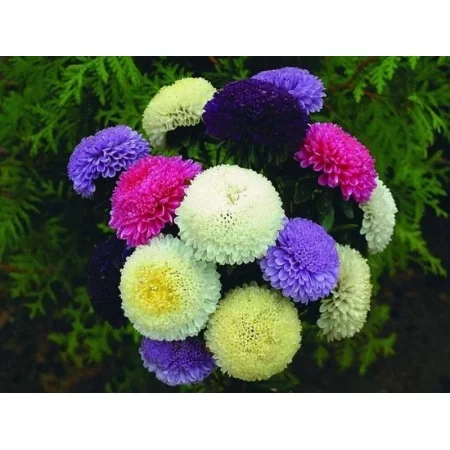Astra Care

Astra is a plant from the family of perennial grassy flowers that were brought to Europe by the French monarch several centuries ago. According to professional florists, at the moment there are several hundred varieties of aster, and in this article we will tell you how to grow, plant and plant it properly.
Growing aster
The easiest way to grow a flower is to place seeds in a summer cottage. As a rule, young plants are planted in mid-March, and already with the onset of the first months of summer we will be able to see how they bloom and bloom.
It is necessary to place the seeds in shallow funnels (up to 4 centimeters in depth). Following them, it is necessary to pour abundantly with settled liquid and cover with protection, protecting from temperature changes. Between seedlings, a distance of 10 centimeters should be provided - extra seedlings are transplanted to another place, since each flower will need a certain space for unhindered growth.
A place for asters should be chosen with good lighting. The soil should be fertile, with good drainage - excess moisture in the soil can rot the root system, so drainage is vital to ensure astra comfort.
How to care
Asters are unpretentious plants in the care, but they also need certain conditions. The first rule here is preliminary loosening of the soil with thorough weeding of weeds. Perform these procedures will be required after each stage of irrigation.
Fertilizing should be applied to the soil in a certain sequence: the first time - two weeks after planting; the second time - when the first buds appear; the third time - at the very beginning of flowering. You should also promptly remove dried flowers, as other plants can slow down growth and become sick from the presence of withering "neighbors".
Providing comfortable wintering
Most varieties of asters have been growing on the site for 5 years, so it will be useful for every gardener to learn how to properly provide winter conditions for these plants.
Mature flowers can easily tolerate wintering in the open field, but young plants should be transferred to a cool place, placed in separate containers. A flower from the earth should be removed without damaging the earthen lump, since the root system of the young aster is very fragile and susceptible to physical influences.
If we notice dried stems, it is recommended to carefully cut them. After the end of severe winter frosts (with the first spring warmth), the film from the flowerpots should be removed as soon as possible. The sooner we do this, the faster the asters will again grow and open fresh buds.